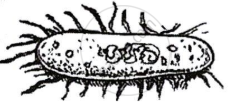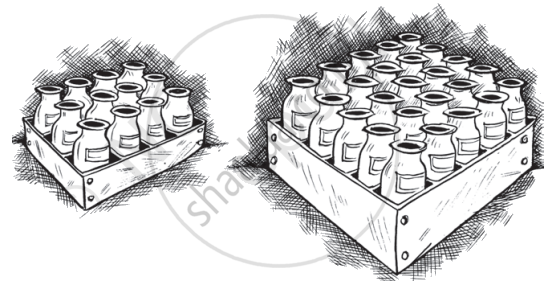Advertisements
Chapters
2: Linear Equations in One Variable
3: Understanding Quadrilaterals
4: Data Handling
5: Squares and Square Roots
6: Cubes and Cube Roots
7: Comparing Quantities
8: Algebraic Expressions and Identities
9: Mensuration
10: Exponents and Powers
▶ 11: Direct and Inverse Proportions
12: Factorisation
13: Introduction to Graphs
![NCERT solutions for Mathematics [English] Class 8 chapter 11 - Direct and Inverse Proportions NCERT solutions for Mathematics [English] Class 8 chapter 11 - Direct and Inverse Proportions - Shaalaa.com](/images/mathematics-english-class-8_6:a152220a99ba47cf8d1b775ab26b8834.jpg)
Advertisements
Solutions for Chapter 11: Direct and Inverse Proportions
Below listed, you can find solutions for Chapter 11 of CBSE NCERT for Mathematics [English] Class 8.
NCERT solutions for Mathematics [English] Class 8 11 Direct and Inverse Proportions EXERCISE 11.1 [Page 136]
Following are the car parking charges near a railway station upto
| 4 hours | ₹60 |
| 8 hours | ₹100 |
| 12 hours | ₹140 |
| 24 hours | ₹180 |
Check if the parking charges are in direct proportion to the parking time.
A mixture of paint is prepared by mixing 1 part of red pigments with 8 parts of base. In the following table, find the parts of the base that need to be added.
| Parts of red pigment | 1 | 4 | 7 | 12 | 20 |
| parts of base | 8 | .... | .... | .... | .... |
In Question 2 above, if 1 part of a red pigment requires 75 mL of base, how much red pigment should we mix with 1800 mL of base?
A machine in a soft drink factory fills 840 bottles in six hours. How many bottles will it fill in five hours?
A photograph of a bacteria enlarged 50,000 times attains a length of 5 cm as shown in the diagram. What is the actual length of the bacteria? If the photograph is enlarged 20,000 times only, what would be its enlarged length?

In a model of a ship, the mast is 9 cm high, while the mast of the actual ship is 12 m high. If the length of the ship is 28 m, how long is the model ship?
Suppose 2 kg of sugar contains 9 × 106 crystals.
How many sugar crystals are there in
- 5 kg of sugar?
- 1.2 kg of sugar?
Rashmi has a road map with a scale of 1 cm representing 18 km. She drives on a road for 72 km. What would be her distance covered in the map?
A 5 m 60 cm high vertical pole casts a shadow 3 m 20 cm long. Find at the same time the length of the shadow cast by another pole 10 m 50 cm high.
A 5 m 60 cm high vertical pole casts a shadow 3 m 20 cm long. Find at the same time the height of a pole which casts a shadow 5 m long.
A loaded truck travels 14 km in 25 minutes. If the speed remains the same, how far can it travel in 5 hours?
NCERT solutions for Mathematics [English] Class 8 11 Direct and Inverse Proportions EXERCISE 11.2 [Pages 141 - 142]
Which of the following are in inverse proportion?
The number of workers on a job and the time to complete the job.
Which of the following are in inverse proportion?
The time taken for a journey and the distance travelled in a uniform speed.
Which of the following are in inverse proportion?
Area of cultivated land and the crop harvested
Which of the following are in inverse proportion?
The time taken for a fixed journey and the speed of the vehicle.
Which of the following are in inverse proportion?
The population of a country and the area of land per person.
In a Television game show, the prize money of Rs 1,00,000 is to be divided equally amongst the winners. Complete the following table and find whether the prize money given to an individual winner is directly or inversely proportional to the number of winners?
| Number of winners | 1 | 2 | 4 | 5 | 8 | 10 | 20 |
| Prize for each winner (in Rs) | 1,00,000 | 50,000 | ... | ... | ... | ... | ... |
Rehman is making a wheel using spokes. He wants to fix equal spokes in such a way that the angles between any pair of consecutive spokes are equal. Help him by completing the following table:

| Number of spokes | 4 | 6 | 8 | 10 | 12 |
| Angle between a pair of consecutive spokes |
90° | 60° | ... | ... | ... |
- Are the number of spokes and the angles formed between the pairs of consecutive spokes in inverse proportion?
- Calculate the angle between a pair of consecutive spokes on a wheel with 15 spokes.
- How many spokes would be needed if the angle between a pair of consecutive spokes is 40°?
If a box of sweets is divided among 24 children, they will get 5 sweets each. How many would each get, if the number of the children is reduced by 4?
A farmer has enough food to feed 20 animals in his cattle for 6 days. How long would the food last if there were 10 more animals in his cattle?
A contractor estimates that 3 persons could rewire Jasminder’s house in 4 days. If, he uses 4 persons instead of three, how long should they take to complete the job?
A batch of bottles was packed in 25 boxes with 12 bottles in each box. If the same batch is packed using 20 bottles in each box, how many boxes would be filled?

A factory required 42 machines to produce a given number of articles in 63 days. How many machines would be required to produce the same number of articles in 54 days?
A car takes 2 hours to reach a destination by travelling at the speed of 60 km/h. How long will it take when the car travels at the speed of 80 km/h?
Two persons could fit new windows in house in 3 days.
One of the persons fell ill before the work started. How long would the job take now?
Two persons could fit new windows in house in 3 days.
How many persons would be needed to fit the windows in one day?
A school has 8 periods a day each of 45 minutes duration. How long would each period be, if the school has 9 periods a day, assuming the number of school hours to be the same?
Solutions for 11: Direct and Inverse Proportions
![NCERT solutions for Mathematics [English] Class 8 chapter 11 - Direct and Inverse Proportions NCERT solutions for Mathematics [English] Class 8 chapter 11 - Direct and Inverse Proportions - Shaalaa.com](/images/mathematics-english-class-8_6:a152220a99ba47cf8d1b775ab26b8834.jpg)
NCERT solutions for Mathematics [English] Class 8 chapter 11 - Direct and Inverse Proportions
Shaalaa.com has the CBSE Mathematics Mathematics [English] Class 8 CBSE solutions in a manner that help students grasp basic concepts better and faster. The detailed, step-by-step solutions will help you understand the concepts better and clarify any confusion. NCERT solutions for Mathematics Mathematics [English] Class 8 CBSE 11 (Direct and Inverse Proportions) include all questions with answers and detailed explanations. This will clear students' doubts about questions and improve their application skills while preparing for board exams.
Further, we at Shaalaa.com provide such solutions so students can prepare for written exams. NCERT textbook solutions can be a core help for self-study and provide excellent self-help guidance for students.
Concepts covered in Mathematics [English] Class 8 chapter 11 Direct and Inverse Proportions are Concept of Direct Proportion, Concept of Inverse Proportion, Concept of Direct Proportion, Concept of Inverse Proportion.
Using NCERT Mathematics [English] Class 8 solutions Direct and Inverse Proportions exercise by students is an easy way to prepare for the exams, as they involve solutions arranged chapter-wise and also page-wise. The questions involved in NCERT Solutions are essential questions that can be asked in the final exam. Maximum CBSE Mathematics [English] Class 8 students prefer NCERT Textbook Solutions to score more in exams.
Get the free view of Chapter 11, Direct and Inverse Proportions Mathematics [English] Class 8 additional questions for Mathematics Mathematics [English] Class 8 CBSE, and you can use Shaalaa.com to keep it handy for your exam preparation.
